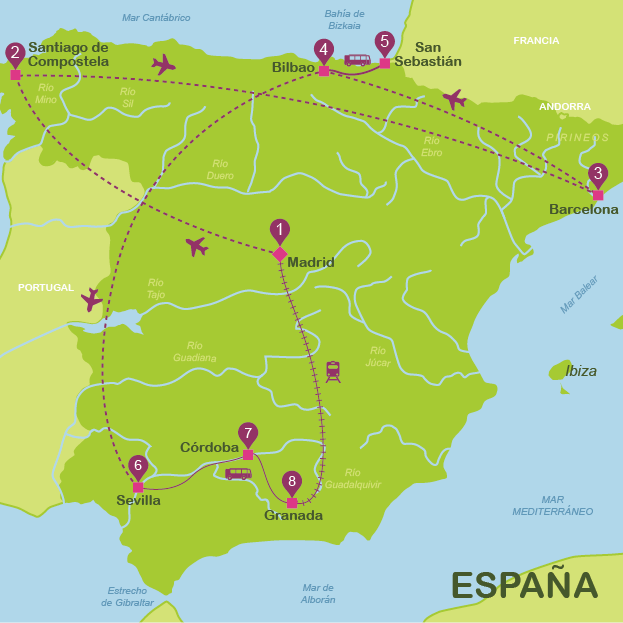
With the aqueduct now at your back, and after passing the tourism office, you'll see a street that rises steeply to the right. This is Calle Real, which consists of three adjoining streets: Cervantes, Juan Bravo and Isabel la Católica. Particularly in Calle Juan Bravo, you'll find various points of interest (see detailed description below). These buildings are worth seeing from the outside, but you don't need to go in. About 20 minutes.
- Continue up Calle Cervantes until you come to the curve where it becomes Juan Bravo. There is a viewpoint here from which you can see the Sierra de Guadarrama and, at the base of the viewpoint, the neighbourhood of San Millán, formerly known as the neighbourhood of witches, where the church is of particular interest.
- At your back is the peculiar Casa de las Puntas. Like the Conchas de Salamanca house, it is said that hidden behind one if its 365 points is a treasure.
- In front of the Casa de la Puntas is a house with Gothic-style windows: this is Palacio del Conde Alpuente. Noteworthy are its windows and the message written on the stone stating that parking carriages in front of the door will be punished with a "fine of 5 pesetas".
- After this, where the pharmacy is, you'll find Casa de los del Río. More than the exterior, it's worth going inside to see one of the most fascinating courtyards in the city (it's usually open during the week, when the old stationer's store opens).
- If you keep walking, a street branches off on the right with a set of stairs leading down. Here you can see the Alhóndiga house, which over the years has served many purposes, from being a storehouse for cereals to a first-aid station. Now it is used to house different exhibitions.
- A few steps further up and you'll come to the square Plaza de Medina del Campo, commonly referred to as Las Sirenas because of the two statues there, half woman, half lion. In the centre of the square is the statue of Juan Bravo, a 15th century nobleman and military official. Traces of the yellow jersey painted on the statue when local cyclist Pedro Delgado won the Tour de France in 1988 are still visible.
- At the top of the stairs is a fountain, once located where the statue of Juan Bravo stands today. The house at the end was the Palacio de Enrique IV (Palace of Henry IV). He liked living here because it was closer to the centre than the Alcázar.
- On the left is San Martín church. A 12th century Romanesque-style construction, the church is noteworthy for the beauty of its portico capitals.
- After the church, you'll see the Biblioteca Pública del Estado (Public State Library), formerly a prison in which the poet and playwright Lope de Vega was once held.
- If you continue up Calle Real, you'll come to a widening in the street where there is a small fountain. This is Plaza del Corpus Christi. To the left is a pointed arch. If you cross it, you'll find the door to what was once the Sinagoga Mayor (main synagogue) for the Jews of Segovia, today a church and convent. The little street on the left branching off Corpus Square is the street of the Old Jewish Quarter, which formed part of the neighbourhood to which the Jews were confined during the period of the Catholic Monarchs until their ultimate expulsion from the Iberian Peninsula. With the construction of the cathedral, many Jewish houses and streets vanished. The Jewish community of Segovia was the largest in Castile and its expulsion from the city resulted in a severe demographic and financial crisis.
- Continuing on Calle de Isabel la Católica, you'll come to Plaza Mayor.

